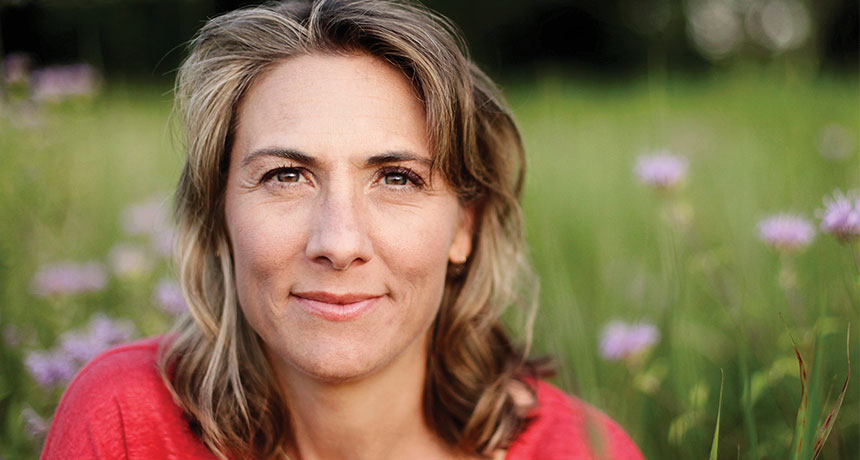‘Lab Girl’ invites readers into hidden world of plants

The first, tiny root that emerges from a baby plant can make it or break it.
Anchor to a good patch of ground, and the plant can thrive for decades. Set up someplace else, without enough water or sunshine, and all may be lost.
The odds of a single rootlet mooring itself to just the right spot of soil are more than a million to one, writes geobiologist Hope Jahren. “The gamble is everything, and losing means death.”
Jahren touches only briefly on the plight of the newborn root, just a page or so near the beginning of her new book, Lab Girl, but it’s enough to bring drama to a topic not usually considered all that thrilling. Jahren’s great skill, here and throughout the book, is making readers care — to root for the root, in this case.
In Lab Girl — which is part memoir, part plant love story — each cactus, tree and leaf gets the same empathetic treatment. Jahren doesn’t so much spice up plant life as she does reveal it — histories, triumphs, tragedies and all — to those who might not have been paying close enough attention.
But this isn’t just a book for botanists. Or science geeks. Or lovers of nonfiction. This is a book for anyone who has stayed up late with a flashlight beneath the covers, vowing to finish just one last chapter.
Interspersed between snippets about plants, Jahren puts her own life under the microscope, baring gritty details about her struggles with bipolar disorder (she had to go off her medications during pregnancy) and as a woman desperately scrambling to eke out a career in science. She’s made it now, and is currently at the University of Hawaii at Manoa in Honolulu, studying, among other things, how carbon in fossilized plants can reveal information about ancient climates.
But the book’s lifeblood, or xylem and phloem, if you will, are Jahren’s stories from her early days as a scientist. For Jahren, and her long-term scientific partner in crime, an otherworldly character named Bill Hagopian (he once lived in a hole he dug in his parents’ yard), life is a series of adventures. The duo crisscross the country for scientific meetings, take students on madcap road trips and regularly pull all-nighters in the lab.
Though Jahren and Hagopian often end up in exotic places (an island in the Arctic Ocean or Miami’s Monkey Jungle, among other places), Jahren somehow makes the everyday tasks of lab work thrilling, too. And through it all, she pauses to tell the untold stories of plants — to consider life’s wonders from a plant’s point of view.
Vines, for instance, “do not play by the rules of the forest,” she writes. They steal light and water, and will climb over anything in their paths to do so. And trees, scientists have discovered, can actually “remember” their childhood.
In the epilog, Jahren eases the reader back to the reality we know. “Plants are not like us,” she writes. “They are beings we can never truly understand.”
But anyone who reads Lab Girl will know that can’t be true. Because for nearly 300 pages, Jahren has made us feel like we can.
Buy Lab Girl from Amazon.com. Sales generated through the links to Amazon.com contribute to Society for Science & the Public’s programs.